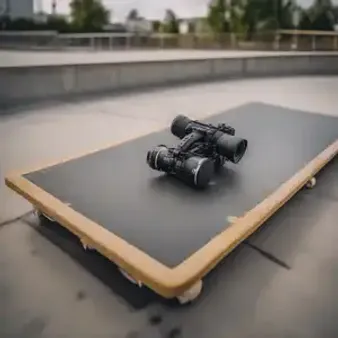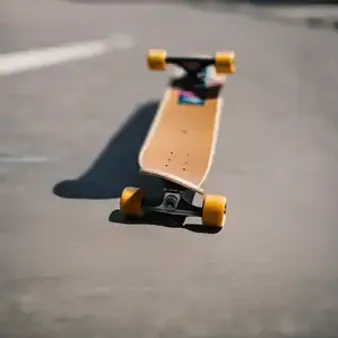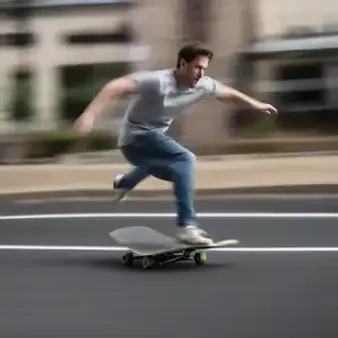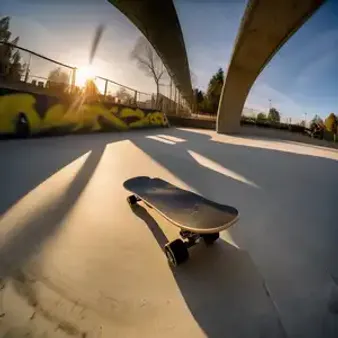Table of Contents
If you're passionate about skateboarding and capturing stunning footage, you've probably heard of filmer boards. At kizworld, we're diving into the world of filmer boards, exploring what they are, why they're gaining popularity, and how they can take your skateboarding videos to the next level. Whether you're a seasoned filmmaker or just starting, this guide will equip you with the knowledge to master the art of filming with filmer boards.
Feature | Description |
|---|---|
Definition | A smaller skateboard designed for a filmmaker to ride while filming another skateboarder. |
Purpose | Capture dynamic and stable footage of skateboarding tricks and maneuvers. |
Benefits | Unique angles, smooth tracking shots, enhanced video quality. |
Key Considerations | Size, deck material, wheel type, and filming equipment compatibility. |
What is a Filmer Board?
Picture this: you're trying to film your friend land a gnarly kickflip, but you're stuck on foot. It’s tough to keep up, right? That's where a filmer board swoops in to save the day! It's like a skateboard's cooler, smaller sibling, designed specifically for the daredevil filmmaker in you. This nifty board lets you cruise alongside the action, capturing buttery smooth footage without tripping over your own two feet. Think of it as your secret weapon for taking your skateboarding videos from "meh" to "whoa!"
- Smaller Size: Easier to maneuver for filming.
- Stable Platform: Keeps your camera steady for pro-looking shots.
It's all about finding that sweet spot between maneuverability, stability, and capturing those epic skateboarding moments.
What is a Filmer Board?
Choosing the Right Filmer Board
Picking the right filmer board is like choosing the perfect pair of shoes for skateboarding – it's gotta feel right! You don't want something too big and clunky, or you'll be tripping over yourself. But something too small might not give you the stability you need for those awesome shots.
Think about what kind of filming you'll be doing. Are you zipping around a skatepark, chasing after someone landing a heelflip? You'll want a nimble board like the ones you can learn about in our guide to how to do a heelflip. Maybe you're more into capturing long, smooth lines down the street. In that case, a slightly longer board might be your jam, offering more stability for those cinematic shots. It's all about finding what works best for you and your filming style!
Size Matters!
Filmer boards come in different sizes, just like regular skateboards. But here's the thing: they're generally smaller than your average board. This is because it's all about agility and maneuvering around while you film. You want something that feels like an extension of yourself, not a bulky piece of wood holding you back.
Board Size | Best For |
|---|---|
Shorter (Under 28 inches) | Tight spaces, quick turns, technical filming |
Longer (28-32 inches) | Stability, smoother rides, long lens filming |
Deck Material: Wood or Composite?
Now, let's talk about what your filmer board is made of. The deck, the part you stand on, usually comes in two flavors: wood or composite materials. Wood decks, especially maple, are like the classics – they offer a good balance of flex, durability, and that satisfying "pop" sound. Composites, on the other hand, are like the new kids on the block. They're made from high-tech materials that can be lighter and more resistant to wear and tear. Your choice depends on your budget and what you're looking for in a filmer board. Check out our article on Tony Hawk for inspiration on board choices!
- Wood Decks:
- Classic feel
- Good flex and durability
- Composite Decks:
- Lightweight
- Resistant to wear and tear
Choosing the Right Filmer Board
Mastering Filmer Board Tricks
Alright, so you've got your filmer board, you're feeling confident. Time to kick things up a notch! Mastering some basic filmer board tricks can really make your videos stand out. Think of it like learning to ride a bike – once you've got the basics down, you can start pulling off some cool moves.
Smooth Tracking is Key
One of the most important things is learning to track your subject smoothly. You want your footage to be like butter, not a bumpy rollercoaster ride! Start by practicing rolling alongside someone as they skate, keeping a consistent distance and speed. It takes practice, but trust me, nailing those silky smooth tracking shots is super satisfying. It's all about finding that flow, just like when you're learning how to improve your balance on a regular skateboard.
Trick | Description |
|---|---|
Heel Pivot | Use your heels to quickly turn the board, allowing for sharp turns to follow the action. |
Nose Pivot | Similar to a heel pivot, but using your toes to pivot the board – great for quick direction changes. |
Don't Be Afraid to Experiment!
Once you're comfortable with basic tracking, get creative! Try incorporating some subtle footwork to add dynamism to your shots. A little hop here, a quick pivot there – these small movements can make a big difference. Remember, filming with a filmer board is all about finding your own style and having fun with it. Think outside the box! Maybe you want to try filming a line from a low angle, almost touching the ground. Or how about a sweeping arc shot as someone flies by? The possibilities are endless! Just like with regular skateboarding, experimenting with new tricks, like learning how to do a heelflip, can lead to awesome results.
- Practice rolling alongside a friend while maintaining a consistent distance.
- Experiment with footwork to add movement and variety to your shots.
- Try different angles and perspectives to capture unique footage.
Mastering Filmer Board Tricks
Filming with a Filmer Board
Okay, so you've got your filmer board dialed in, you're feeling like a pro. Now it's time to merge those worlds – skateboarding and filmmaking! This is where the magic happens. Remember, it's not just about pointing your camera at the action; it's about becoming part of it. Imagine yourself as a dancer, gliding alongside your subject, anticipating their every move. Your filmer board becomes an extension of your vision, allowing you to capture angles and perspectives that would make even Tony Hawk say "whoa!"
Finding Your Flow
Think back to when you first learned to ride a skateboard. It felt a little wobbly at first, right? Filming with a filmer board is similar. You're finding your balance between maneuvering the board and keeping your camera steady. Start by practicing in a controlled environment. Maybe it's an empty parking lot or your driveway. Get comfortable with basic movements like rolling alongside a friend while maintaining a consistent distance. It's like learning to walk before you can run. As you gain confidence, experiment with incorporating subtle footwork to add movement to your shots. A little heel pivot here, a nose pivot there – these small adjustments can make a world of difference.
Skill | Practice Drill |
|---|---|
Balance and Stability | Ride the filmer board in a straight line, gradually increasing speed. Practice shifting your weight and maintaining balance. |
Tracking a Moving Subject | Have a friend skateboard at a moderate pace. Practice rolling alongside them, maintaining a consistent distance and framing them in your camera's viewfinder. |
Capturing the Action
Once you're feeling comfortable with the basics, it's time to crank things up! Head to the skatepark with your friends and put your skills to the test. Remember, every skate session is an opportunity to experiment and try new things. Don't be afraid to get creative with your angles and perspectives. Maybe you want to capture a grind from a low angle, almost touching the ground, or a sweeping arc shot as your friend flies through the air. The possibilities are endless! And hey, if you mess up a shot, that's okay! Even the pros have to start somewhere. The most important thing is to have fun and let your creativity flow. Who knows, you might even discover a new filming technique that becomes your signature style. After all, skateboarding and filmmaking are all about pushing boundaries and expressing yourself! Check out our guides on how to do a grind and how to do a slide for inspiration on capturing those tricks on film.
- Experiment with different camera angles and perspectives to add visual interest.
- Practice filming a variety of skateboarding tricks, from basic ollies to more advanced maneuvers.
- Don't be afraid to make mistakes – that's how you learn and improve!
Filming with a Filmer Board
Final Thought
Filmer boards have revolutionized the way skateboarders capture their skills and creativity. They offer a dynamic and engaging perspective, allowing for unique angles and captivating shots. Whether you're a seasoned filmmaker or just starting, incorporating a filmer board into your setup can significantly enhance the quality and creativity of your skateboarding videos. So grab your board, experiment with different techniques, and elevate your skateboarding videography to new heights.